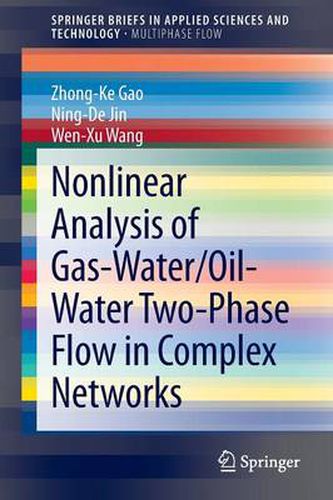Readings Newsletter
Become a Readings Member to make your shopping experience even easier.
Sign in or sign up for free!
You’re not far away from qualifying for FREE standard shipping within Australia
You’ve qualified for FREE standard shipping within Australia
The cart is loading…






This title is printed to order. This book may have been self-published. If so, we cannot guarantee the quality of the content. In the main most books will have gone through the editing process however some may not. We therefore suggest that you be aware of this before ordering this book. If in doubt check either the author or publisher’s details as we are unable to accept any returns unless they are faulty. Please contact us if you have any questions.
Understanding the dynamics of multi-phase flows has been a challenge in the fields of nonlinear dynamics and fluid mechanics. This chapter reviews our work on two-phase flow dynamics in combination with complex network theory. We systematically carried out gas-water/oil-water two-phase flow experiments for measuring the time series of flow signals which is studied in terms of the mapping from time series to complex networks. Three network mapping methods were proposed for the analysis and identification of flow patterns, i.e. Flow Pattern Complex Network (FPCN), Fluid Dynamic Complex Network (FDCN) and Fluid Structure Complex Network (FSCN). Through detecting the community structure of FPCN based on K-means clustering, distinct flow patterns can be successfully distinguished and identified. A number of FDCN’s under different flow conditions were constructed in order to reveal the dynamical characteristics of two-phase flows. The FDCNs exhibit universal power-law degree distributions. The power-law exponent and the network information entropy are sensitive to the transition among different flow patterns, which can be used to characterize nonlinear dynamics of the two-phase flow. FSCNs were constructed in the phase space through a general approach that we introduced. The statistical properties of FSCN can provide quantitative insight into the fluid structure of two-phase flow. These interesting and significant findings suggest that complex networks can be a potentially powerful tool for uncovering the nonlinear dynamics of two-phase flows.
$9.00 standard shipping within Australia
FREE standard shipping within Australia for orders over $100.00
Express & International shipping calculated at checkout
This title is printed to order. This book may have been self-published. If so, we cannot guarantee the quality of the content. In the main most books will have gone through the editing process however some may not. We therefore suggest that you be aware of this before ordering this book. If in doubt check either the author or publisher’s details as we are unable to accept any returns unless they are faulty. Please contact us if you have any questions.
Understanding the dynamics of multi-phase flows has been a challenge in the fields of nonlinear dynamics and fluid mechanics. This chapter reviews our work on two-phase flow dynamics in combination with complex network theory. We systematically carried out gas-water/oil-water two-phase flow experiments for measuring the time series of flow signals which is studied in terms of the mapping from time series to complex networks. Three network mapping methods were proposed for the analysis and identification of flow patterns, i.e. Flow Pattern Complex Network (FPCN), Fluid Dynamic Complex Network (FDCN) and Fluid Structure Complex Network (FSCN). Through detecting the community structure of FPCN based on K-means clustering, distinct flow patterns can be successfully distinguished and identified. A number of FDCN’s under different flow conditions were constructed in order to reveal the dynamical characteristics of two-phase flows. The FDCNs exhibit universal power-law degree distributions. The power-law exponent and the network information entropy are sensitive to the transition among different flow patterns, which can be used to characterize nonlinear dynamics of the two-phase flow. FSCNs were constructed in the phase space through a general approach that we introduced. The statistical properties of FSCN can provide quantitative insight into the fluid structure of two-phase flow. These interesting and significant findings suggest that complex networks can be a potentially powerful tool for uncovering the nonlinear dynamics of two-phase flows.